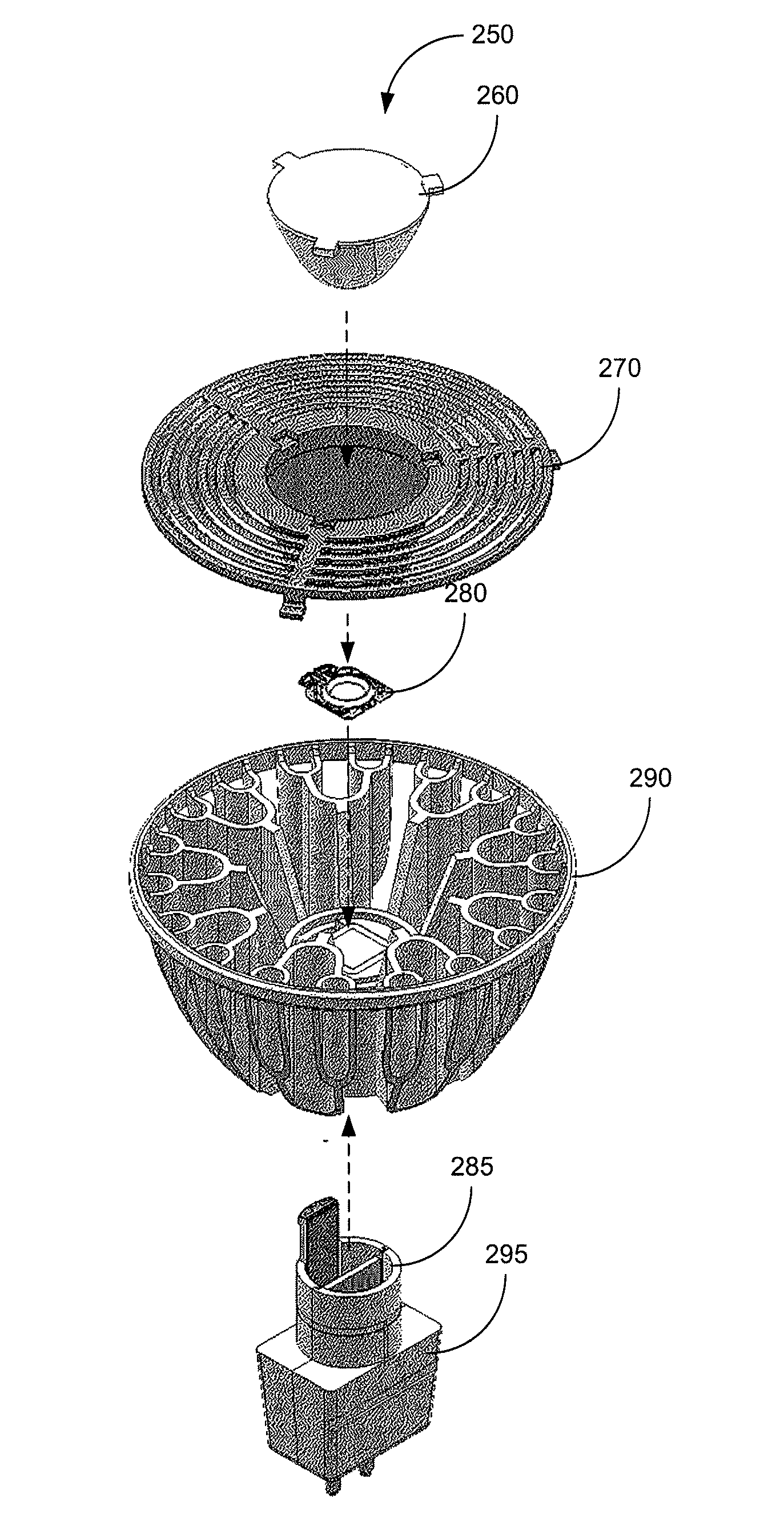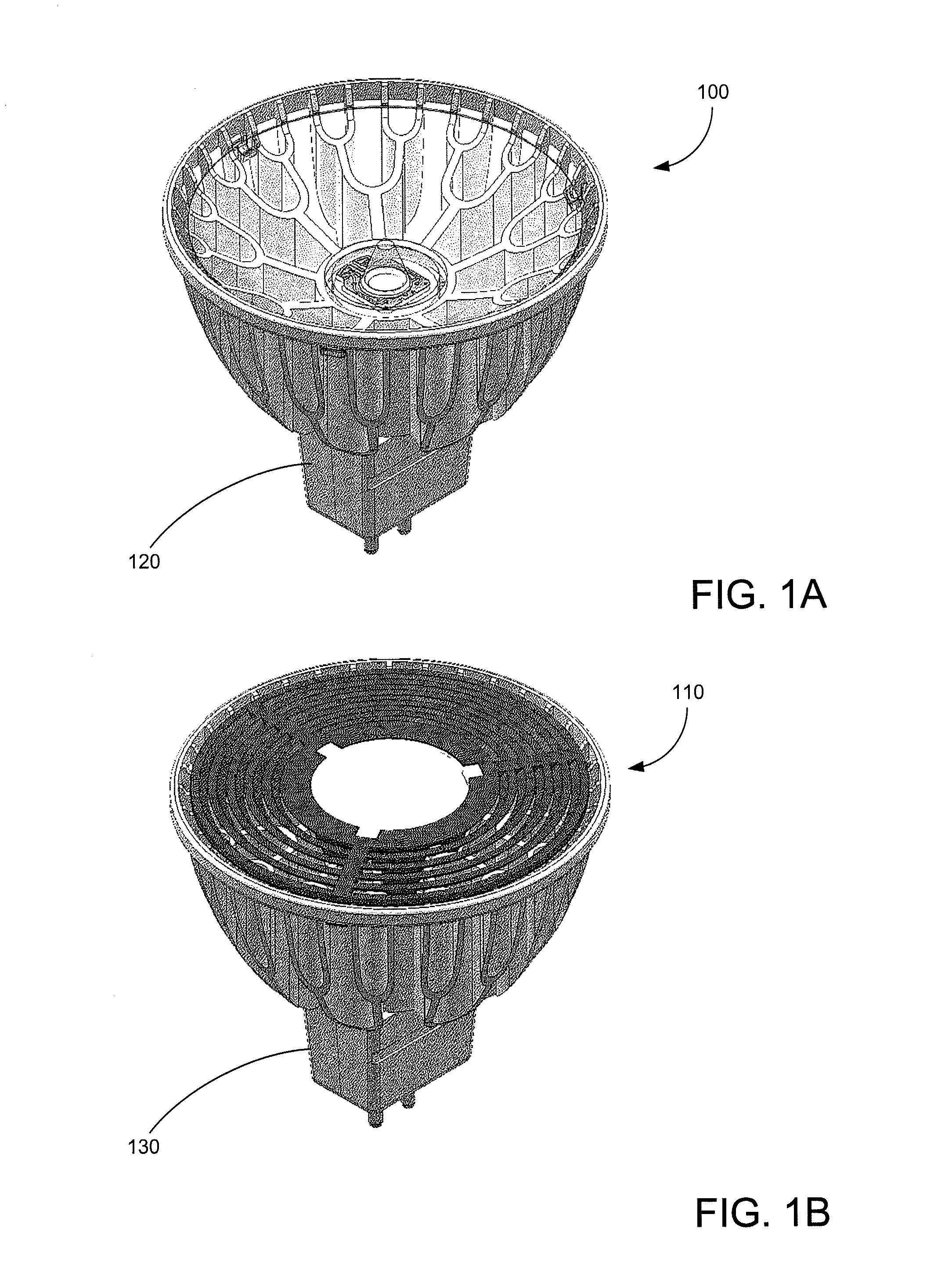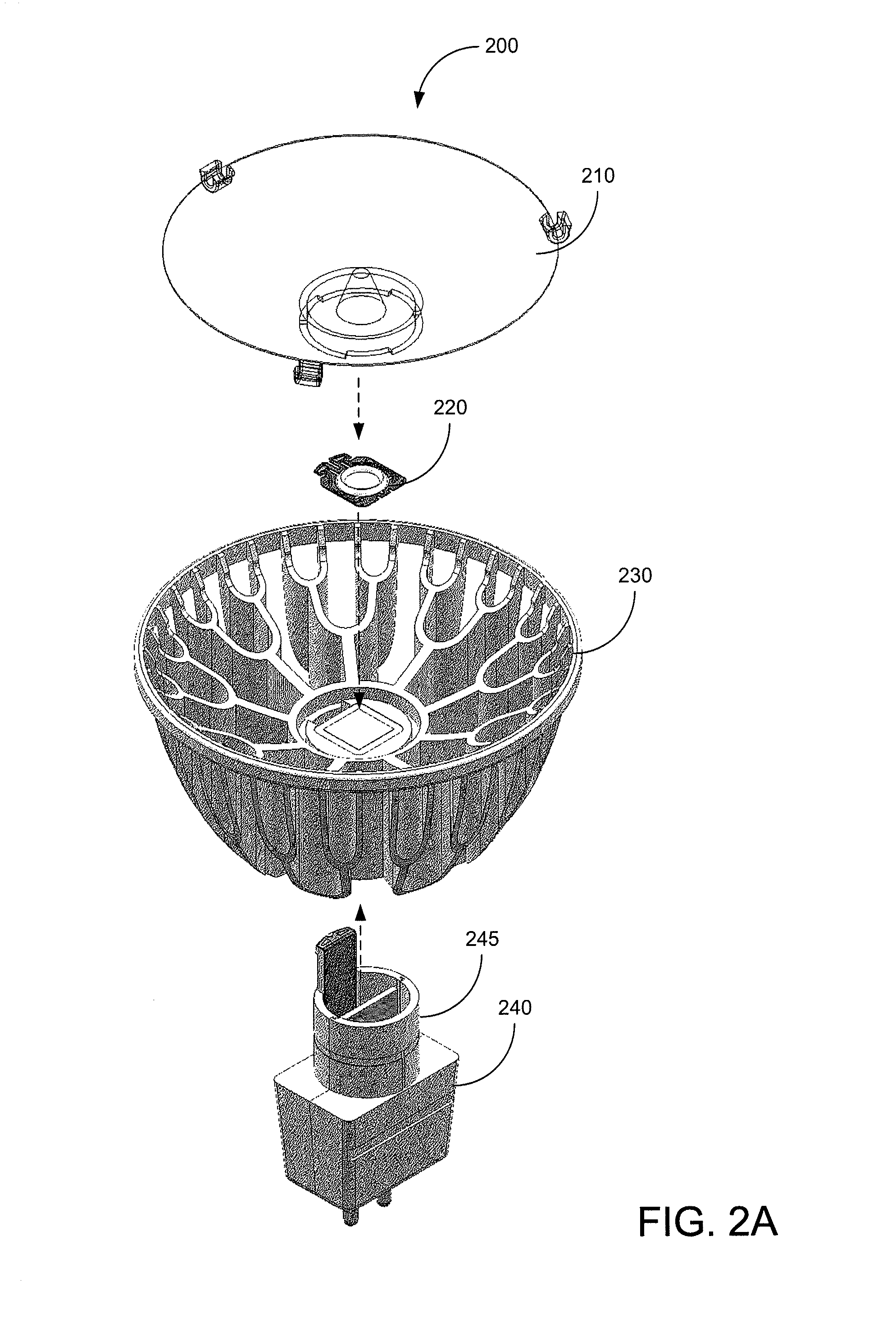Illumination sources with thermally-isolated electronics
a technology of electronic components and illumination sources, applied in the field of high-efficiency lighting sources, can solve the problems of slow adoption of alternative lighting sources, many people are still reluctant to switch to these alternative light sources, and the waste of lamps cannot be simply disposed of at the curbside, so as to reduce the cross section, reduce the amount of potting materials, and improve the reliability of components
- Summary
- Abstract
- Description
- Claims
- Application Information
AI Technical Summary
Benefits of technology
Problems solved by technology
Method used
Image
Examples
Embodiment Construction
[0030]FIGS. 1A-B illustrate various embodiments of the present invention. More specifically, FIGS. 1A-B illustrate embodiments of MR-16 form factor compatible LED lighting sources 100 and 110 having GU 5.3 form factor compatible bases 120 and 130. Such MR-16 lighting sources typically operate upon 12 volts, alternating current (e.g. VAC). In the examples illustrated, LED lighting source 100 is configured to provide a spot light having a 10 degree beam size and LED lighting source 110 is configured to provide a flood light having a 25 or 40 degree beam size.
[0031]In various embodiments, an LED assembly described in the pending patent applications described above, and variations thereof, may be used within LED lighting sources 100 and 110. Theses LED assemblies are currently under development by the assignee of the present patent application. In various embodiments, LED lighting source 100 may provide a peak output brightness from approximately 7600 to 8600 candelas (with approximatel...
PUM
 Login to view more
Login to view more Abstract
Description
Claims
Application Information
 Login to view more
Login to view more - R&D Engineer
- R&D Manager
- IP Professional
- Industry Leading Data Capabilities
- Powerful AI technology
- Patent DNA Extraction
Browse by: Latest US Patents, China's latest patents, Technical Efficacy Thesaurus, Application Domain, Technology Topic.
© 2024 PatSnap. All rights reserved.Legal|Privacy policy|Modern Slavery Act Transparency Statement|Sitemap



